Affiliate links on Android Authority may earn us a commission. Learn more.
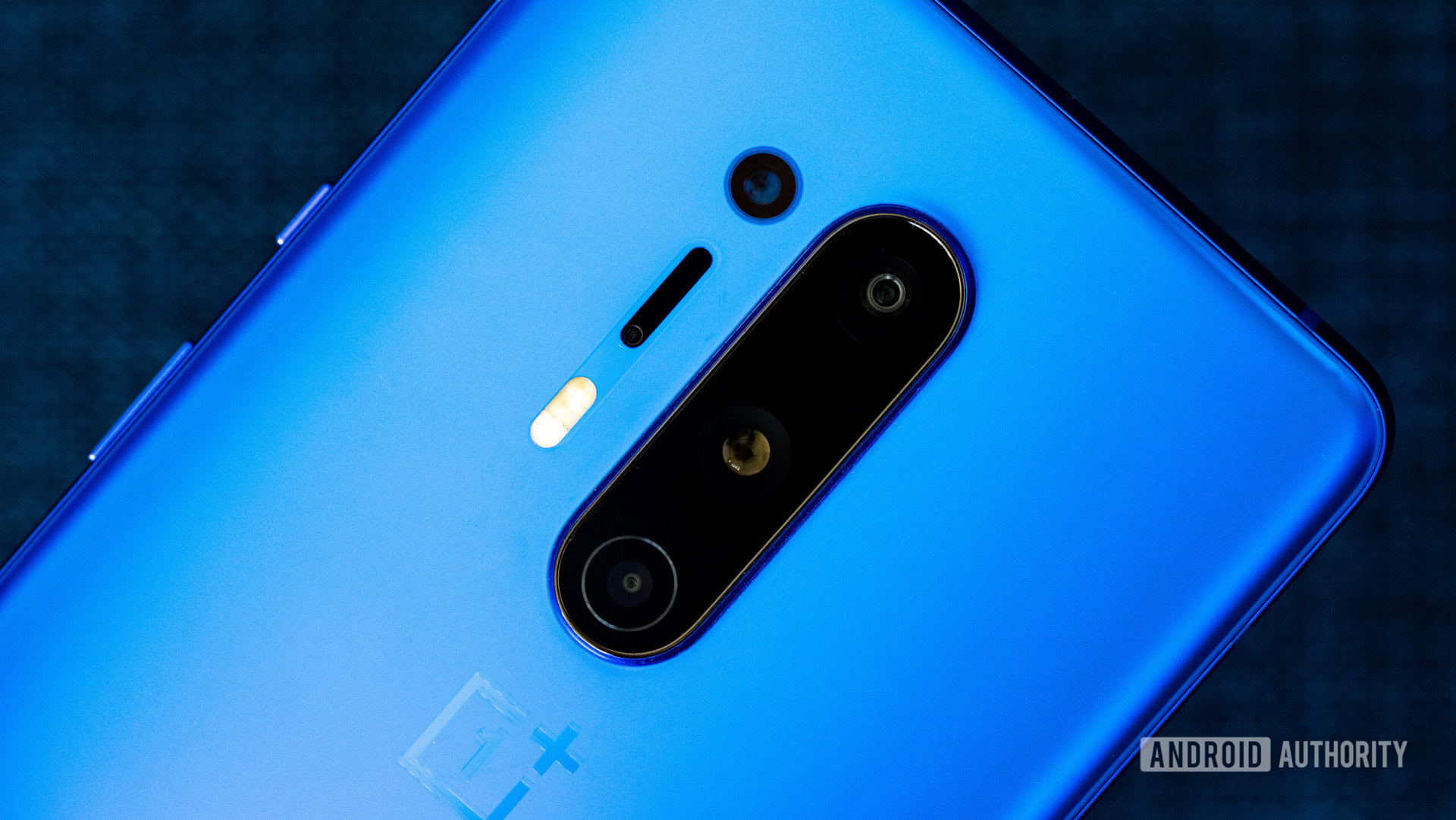
OnePlus 8 Pro
What we like
What we don't like
OnePlus 8 Pro
When the OnePlus 7T and OnePlus 7T Pro launched in October 2019, I was perplexed, to say the least. OnePlus made the vanilla 7T just a little too good, adding a 90Hz display, a triple camera system, the new Warp Charge 30T charging system, and the beefy Snapdragon 855 Plus processor to the device. It gave consumers almost no reason to buy the more expensive OnePlus 7T Pro, which really only bested the 7T in two categories: screen resolution and battery capacity.
The OnePlus 7T also had a new design that made it stand apart from the retread looks of the OnePlus 7T Pro. The 7T Pro felt like an afterthought, and it just didn’t offer enough to differentiate it from the OnePlus 7 Pro or OnePlus 7T.
However, 2020 was different. Although the OnePlus 8 and OnePlus 8 Pro share similar designs and core specs, several features might make you pick the OnePlus 8 Pro over the standard OnePlus 8.
OnePlus buyer’s guide: Everything you need to know about the brand
But one question remains. At a list price of $899, the OnePlus 8 Pro was OnePlus’ most expensive flagship ever at launch (if you omit its McLaren edition devices). Do the new bells and whistles of the 8 Pro justify its flagship pricing, and are the differences from the vanilla OnePlus 8 worth $200?
This is Android Authority’s OnePlus 8 Pro review.
About this OnePlus 8 Pro review: I used a OnePlus 8 Pro review unit supplied by the manufacturer over a period of thirteen days. It was running Oxygen OS version 10.5.2.IN11AA, based on Android 10. I used the device on Google Fi in the United States.
Update, June 2021: Added details about new alternatives, including those within the OnePlus 9 series. Also added new software information and details about limited availability and pricing changes.
OnePlus 8 Pro review: The OnePlus 7 Pro… Pro
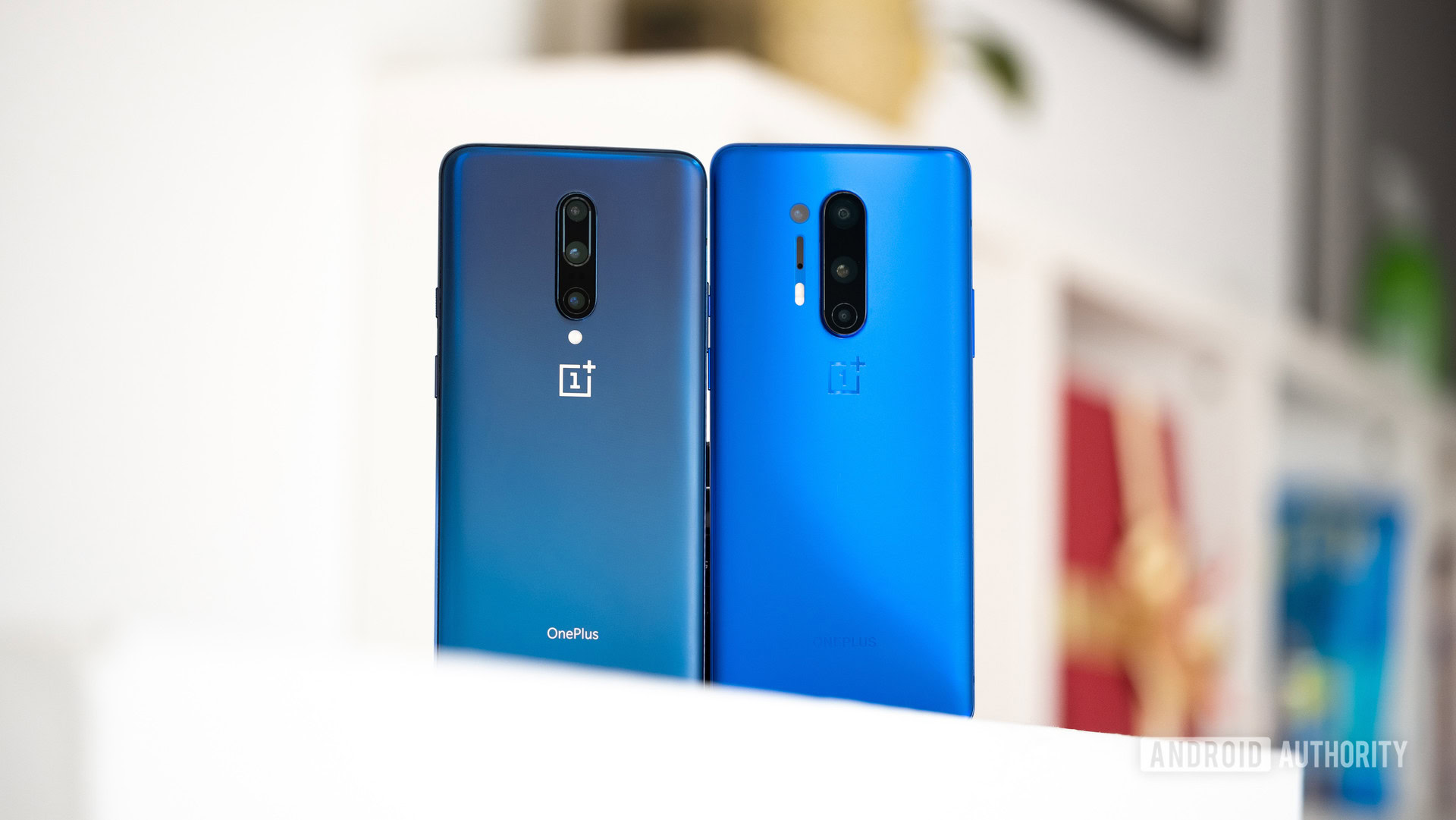
- 165.3 x 74.35 x 8.5mm
- 199g
- Punch-hole camera
- IP68 water and dust resistance
- Curved display edges
- Physical notification switch
- Stereo speakers
The design of the OnePlus 8 Pro is what the OnePlus 7T Pro should have been. While they share the same core design ethos, there are subtle differences that make the OnePlus 8 series feel more refined and modern than the 7T Pro. It would have been nice to see this update in October 2019; regardless, it’s nice to see a new design.
The OnePlus 8 Pro uses a familiar soft-touch glass back and an aluminum frame and the main camera array looks almost identical to the 7 Pro. On the 8 Pro, though, you’ll find a couple of extra cameras and sensors to the left of the array. Otherwise, the body is a bit less rounded, and the camera bump is more pronounced than the OnePlus 7 Pro. The OnePlus 8 and OnePlus 8 Pro also feature the new OnePlus wordmark.

The front of the phone is where the 8 series starts to diverge from the 7T Pro. Gone is the pop-up selfie camera. This time, we’ve got a hole-punch selfie shooter, positioned in the top left of the display. The screen is less rounded and has a more narrow 19.8:9 aspect ratio. If you’ve seen the OPPO Find X2 Pro, this panel is effectively the same, albeit with some different color tuning. That’s not a bad thing, as they both look great.
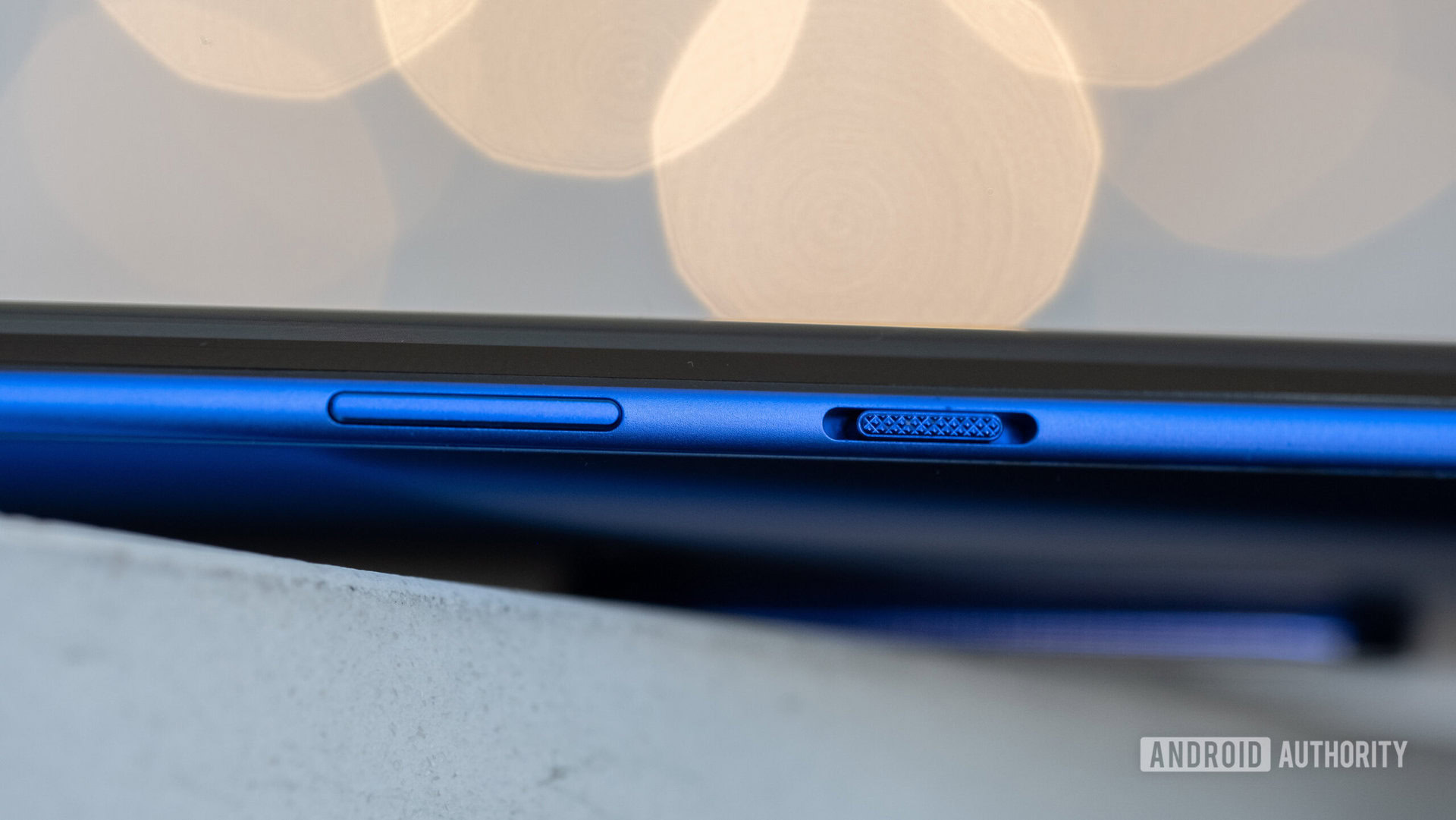
You’ve also got stereo speakers in this device, with the earpiece in the front acting as the second speaker. On the bottom, you’ll find a USB-C port, speaker, and SIM card tray, which does not support microSD cards. On the left, you’ll find the volume rocker, and on the right, you’ll find the power button and signature OnePlus notification slider.
The stereo speakers get fairly loud and don’t sound distorted at high volumes. They tend to lack low-end punch, but that is common for smartphones.
Related: How the price of OnePlus phones changed over the years
I’m personally a fan of this design. I like narrower phones, and this iteration feels like it cleans up all the things a lot of people didn’t like about the OnePlus 7 Pro. Palm rejection still seems to be an issue here though, and I often found the phone scrolling up or down just because my finger was lightly touching the edge display while holding it.
OnePlus has finally added IP68 water and dust resistance, long after its competitors did. You’ll pay for the upgrade, though, as the company inferred the certification added a decent amount of cash per unit. The smaller OnePlus 8 has an IP68 certification, but only if you buy it through carriers. It doesn’t have one if you buy it through OnePlus itself. We reached out for comment and got this response.
The OnePlus 8 in our wireless provider channels have an IP rating due to their guidelines and preference. However, all OnePlus 8 Series phones globally are tested thoroughly for everyday water resistance even if they don’t have an official rating.
Pro really means pro specs and performance
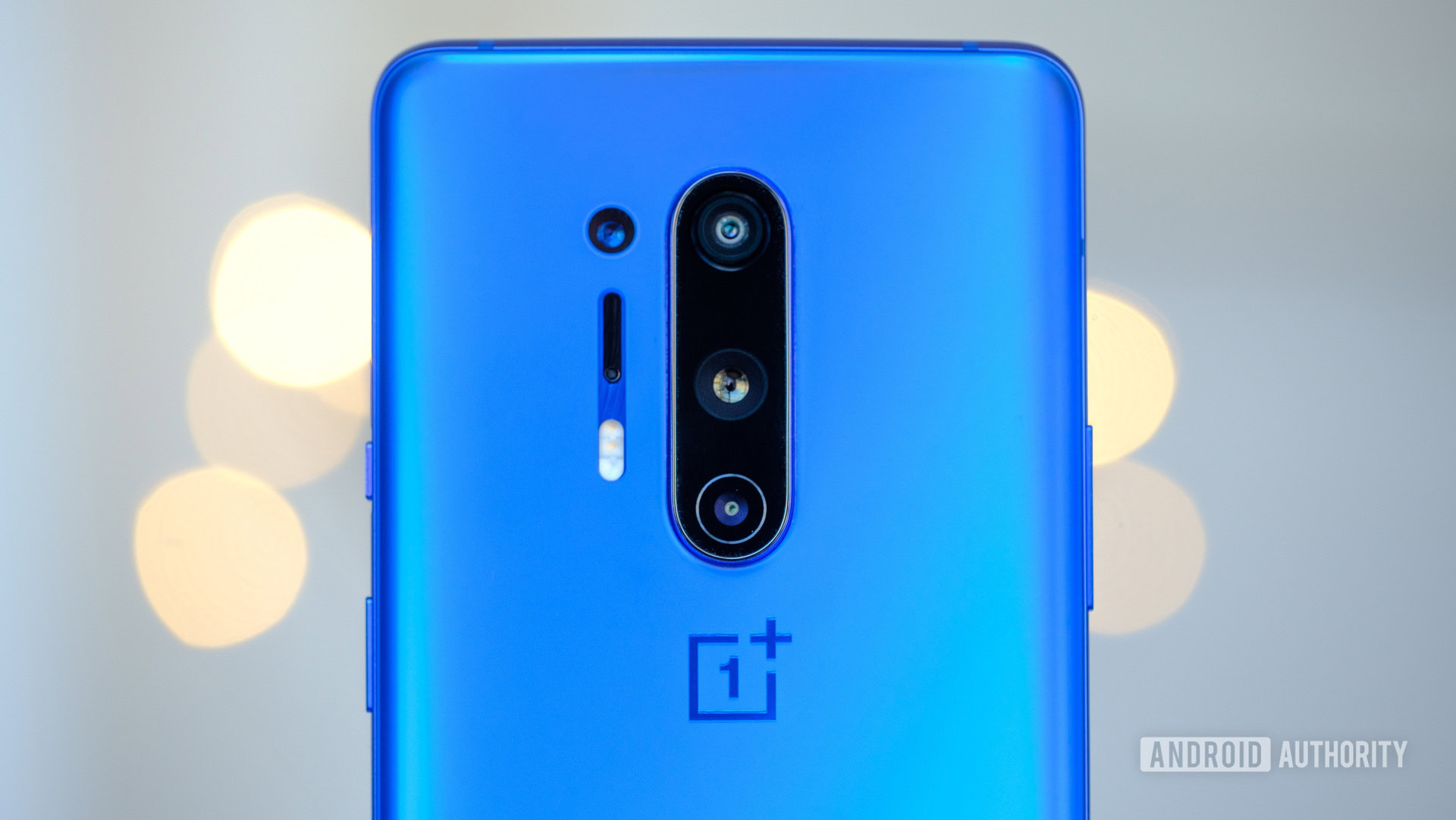
- Qualcomm Snapdragon 865 / X55 5G modem
- 8 or 12GB LPDDR5 RAM
- 128 or 256GB UFS 3.0 storage
- 5G (sub-6GHz all models, mmWave some models)
At launch, the OnePlus 8 Pro was the company’s most “pro” device ever. It delivers on features and specs that can finally trade punches against the best from Samsung and others. Normally, you’re forced to compromise a bit when you buy a OnePlus device in exchange for the cost. With the 8 Pro, OnePlus has flipped the script and gone all-in on features — even if it increased the price to true flagship levels.
Read more: OnePlus 8 and OnePlus 8 Pro specs explained
Alongside the expected Snapdragon 865 processor, you get either 8 or 12GB of RAM and fast UFS 3.0 storage. The high-end specs in this device lead to very good performance, essentially matching the OPPO Find X2 Pro in benchmarks.
And of course, both the OnePlus 8 and OnePlus 8 Pro have 5G, thanks to the X55 modem paired with the Qualcomm Snapdragon 865. The unlocked models will come with low-band and mid-band 5G support, but you’ll have to buy a special model if you want mmWave. Verizon is currently the only carrier in the US to offer mmWave, though, and it’s only selling the OnePlus 8, not the Pro. The mmWave OnePlus 8 will also cost you an additional $100 at Verizon.
The OnePlus 8 Pro is the company's most 'pro' device yet.
I have low-band 5G at my apartment through Google Fi, and speeds are fine, but nothing to write home about. The point of low-band 5G is really to reduce the load on 4G networks, which should give more consistent service.
While we don’t recommend demanding 5G on your next phone quite yet, most devices running the Qualcomm 865 will feature it, since the chipset requires the X55 modem. This pricey chip combo is another factor that adds to the 8 series’ higher price tag.
A class-leading display
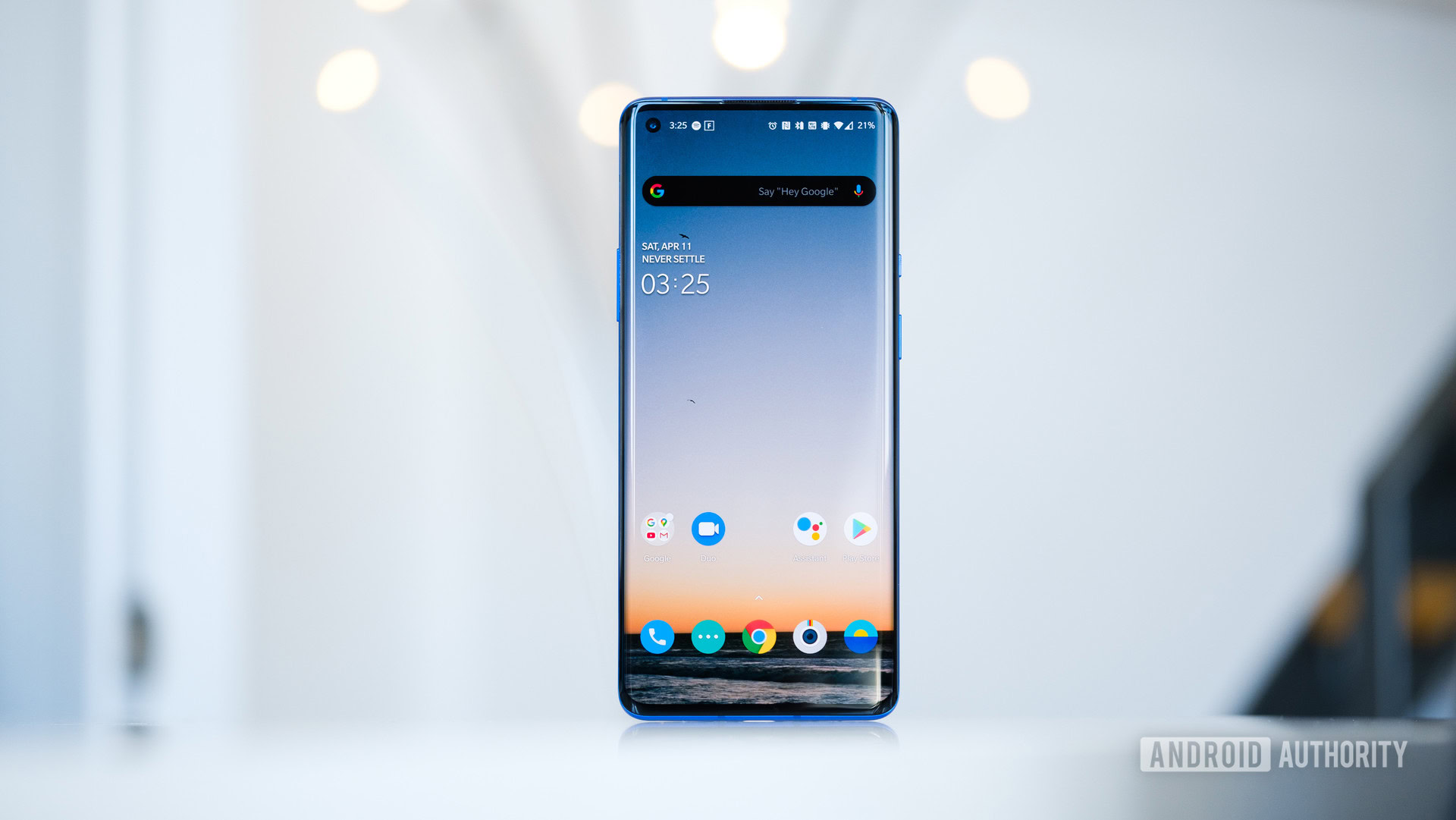
- 120Hz Quad HD+
- 6.78-in
- 1,300nit max brightness
- HDR10+
OnePlus bumped the refresh rate of this device from 90Hz to 120Hz. Combined with the Quad HD+ capable panel, this is one of the fastest and highest-resolution smartphone displays available. OnePlus ships this device set to Full HD+ 120Hz mode out of the box, but you have the option to push both settings to the max if you wish.
The phone also uses an adaptive mode for 120Hz, which switches back to 60Hz when the phone is displaying something static. When in use, it switches back to 120Hz. The device has a touch sampling rate of 240Hz.
OnePlus said this was the best display on any phone it had made to date, and our data supported that claim.
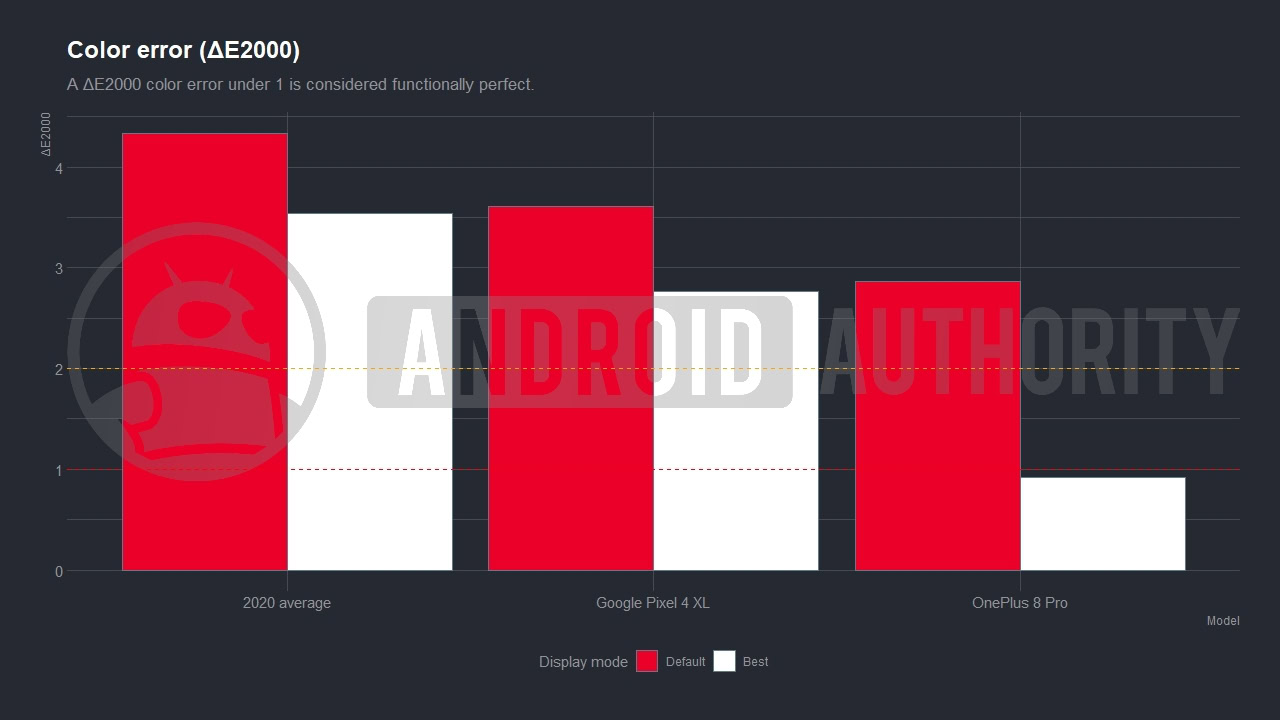
In particular, the color accuracy of the device’s display is top-notch. The phone ships in Vivid mode, which isn’t as accurate due to the phone boosting saturation, but switch it to Natural mode, and the display’s color accuracy jumps.
There is an in-display fingerprint reader that is quite accurate and works quickly. This is a standard optical sensor. It’s thinner than the sensor in last year’s phone, but it’s not the newer Qualcomm’s ultrasonic sensor, so it won’t work quite as well if it’s wet. Phones that used the ultrasonic sensor have suffered from poor accuracy compared to optical sensors, so I can see why OnePlus made this decision.
OnePlus has also included a video interpolation setting in these devices, which can upscale video content to up to 120Hz.
Battery champ
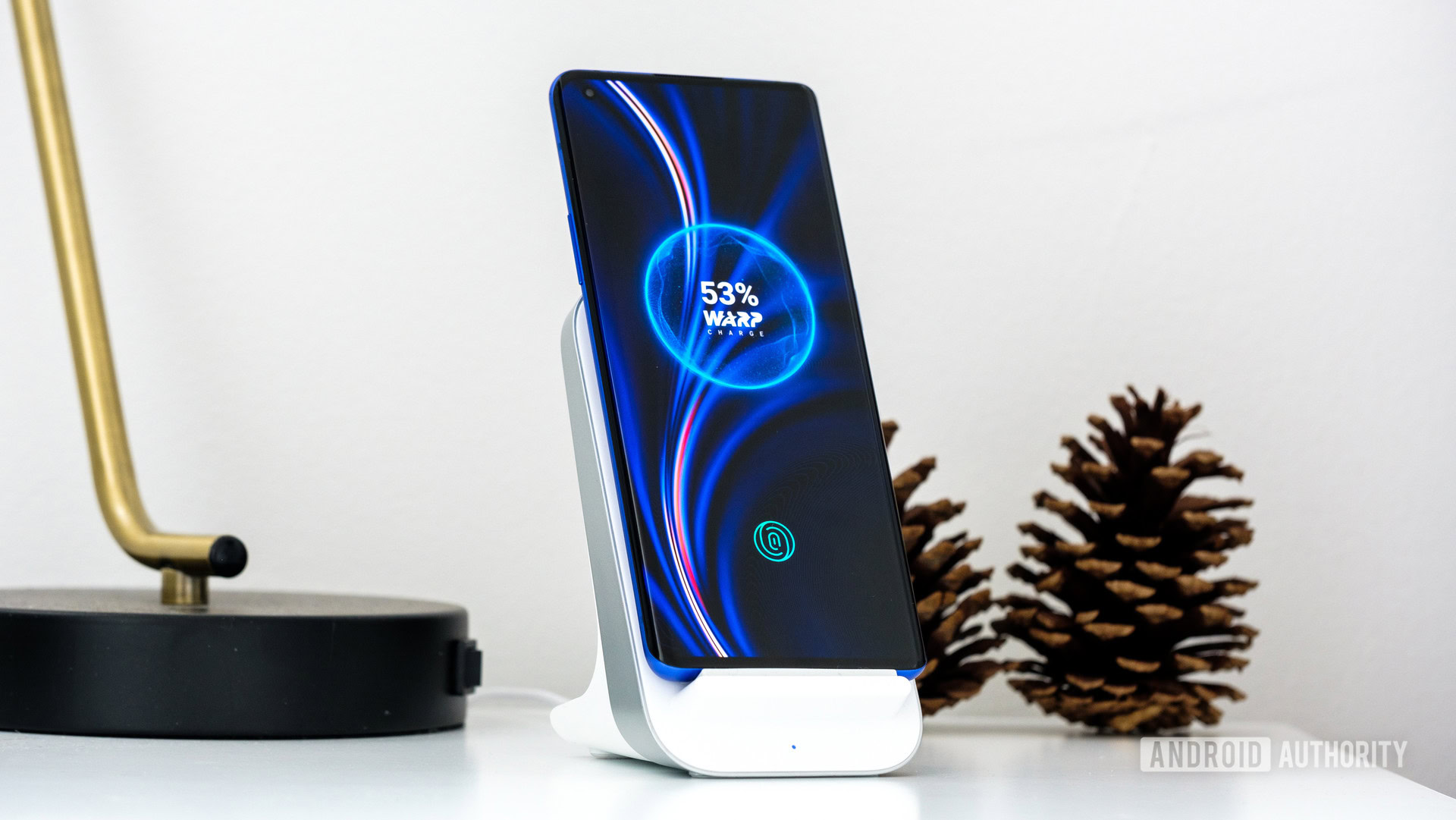
- 4,510mAh battery
- 30W wired and wireless charging-capable
- 3W reverse wireless charging
The OnePlus 8 Pro ships with a fairly large cell, only bested by a few 2020 and 2019 devices such as the LG V60, Samsung Galaxy S20 Ultra, and ASUS ROG Phone 2. In my testing, that battery put in work, and I got about a day and a half’s use from the device. I typically unplugged it at 10:00 AM and didn’t see it die until 6:00 PM the next day. I did a test for a full day on Wi-Fi and a full day on data, since being stuck inside during quarantine is likely impacting my numbers. On data, the phone got slightly less battery life, dying in about 1.25 days versus 1.5 days.
This is great for a OnePlus phone since the OnePlus 7T had fairly weak battery life. It’s nice to see a OnePlus device prioritize battery life.
For clarity, I tested the OnePlus 8 Pro in its stock configuration, which was set to 120Hz Full HD+ mode. Again, you can force 120Hz Quad HD+ mode, but I like to review phones how they come out of the box.
OnePlus includes its OnePlus 30T charger in the box, which the company says will charge the phone to 50% in 23 minutes. For 2020, this was one of the fastest charging options you’d find in the US. Phones such as the HUAWEI P40 Pro, Xiaomi Mi 10 Pro, and OPPO Find X2 Pro bested the OnePlus at 40W, 50W, and 65W, respectively, though these phones aren’t sold in the US. Now, of course, OnePlus reigns supreme in the US with the 9 series phones, which charge at 65W speeds.
OnePlus also made the wireless charging experience on the OnePlus 8 Pro far better than almost any other device you’ll find in the West. The new Warp Charge 30 Wireless charger ($69.95) can charge the OnePlus 8 Pro t0 50% in 30 minutes, says the company. In our testing the device exceeded that, charging to 58% in 30 minutes. To do this, OnePlus had to stick a fairly large fan on the back of the charger. It is certainly audible in a quiet room if you’re listening for it, but it’s quite soft. OnePlus included a bedtime mode that will drop the wattage from the charger to allow the fan to turn off.
30W is wildly fast for wireless charging (at least in the US).
Reverse wireless charging is also available, though it is quite slow. At 3W, it’s one of the slowest options out there, and would only really be useful for charging things like true wireless Bluetooth earbuds. For context, the Samsung Galaxy S20 Plus can reverse wireless charge at 9W.
Streamlined software
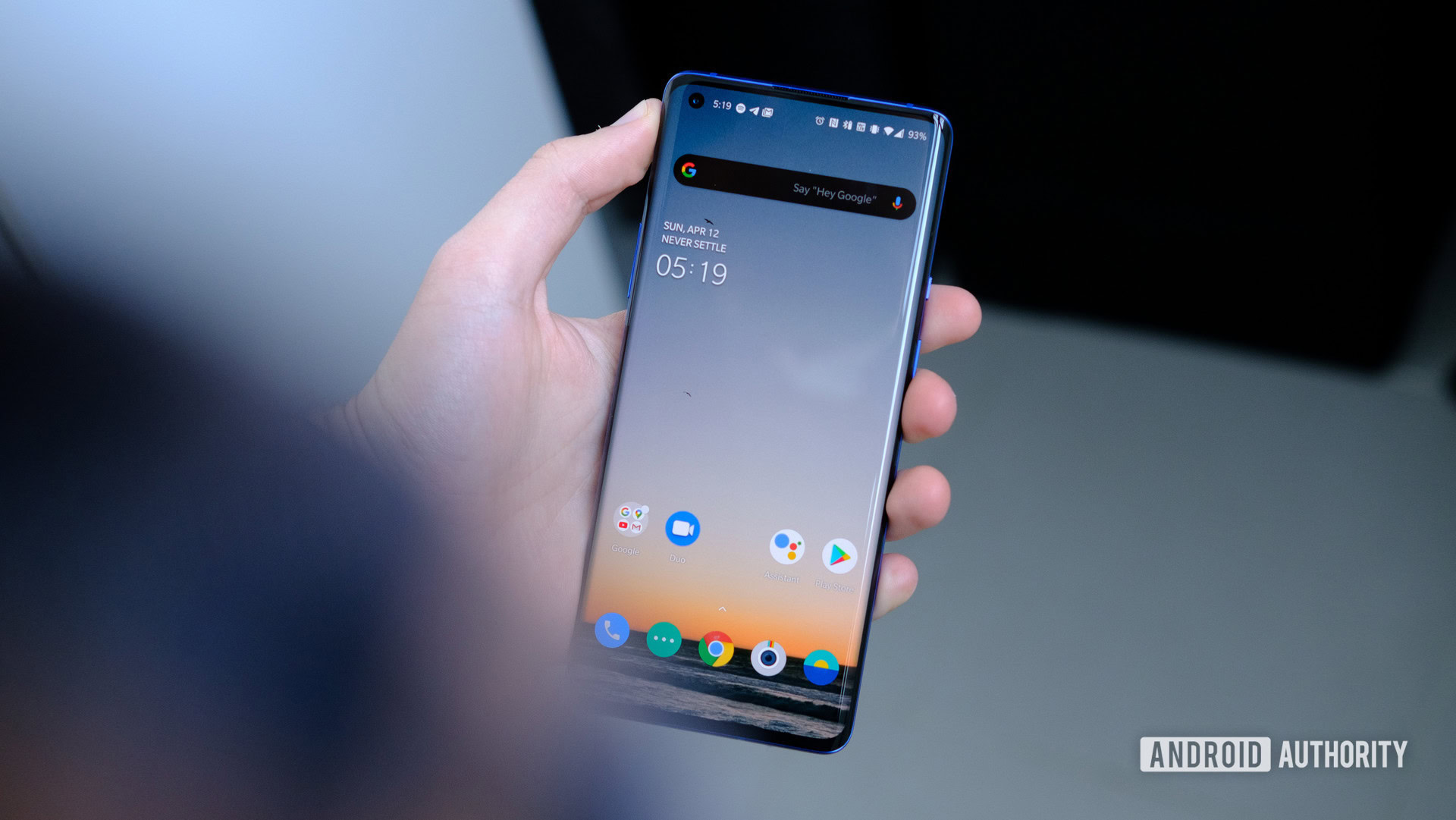
- Oxygen OS 10
- Android 10
This review was originally based on the then-latest Android 10-based version of Oxygen OS. Since then, the stable version of Oxygen OS 11 has landed on the OnePlus 8 series. The most recent version for the 8 Pro as of now is Oxygen OS 11.0.6.6.IN11AA. For more info on Oxygen OS 11, check out our dedicated article.
During the initial review period, the OnePlus 8 Pro ran on Oxygen OS 10, which is based on Android 10. The software includes minimal bloatware, but you will find Netflix pre-installed. OnePlus has its own apps for some things, like messages, gallery, and the dialer, but defaults to Google for others such as Google Podcasts, Google News, and Google Duo.
Oxygen OS supports some useful features, like a dedicated reading mode, gaming mode, and Zen Mode, which forces you to stop using your phone for a predetermined amount of time.
OnePlus didn’t add any significant new features to Oxygen OS this time around. The biggest change is Dark Mode 2.0, which forces dark mode onto more apps including eBay, PayPal, Tinder, Google Pay, and Reddit. More apps will be supported in the future.
For years now, OnePlus has had a great reputation when it comes to updating its phones. Throughout 2020 and into 2021, though, the company has started slipping up. The OnePlus 7 series, for example, didn’t get Android 11 until six months after its stable launch. Even then, that update was riddled with bugs. Monthly security patches are also coming slower for older models.
The bottom line here is that Oxygen OS is a great operating system, but OnePlus isn’t doing upkeep as well as it used to.
Cameras: Optically interesting

- Wide: 48MP Sony IMX586, 119.7-degree FOV
- Main: 48MP Sony IMX689, OIS
- Telephoto: 8MP, 12MP sensors, OIS
- Color Filter camera: 5MP (nerfed in 2020)
- Selfie: 16MP Sony IMX471
- Up to 4K @ 60fps video
One of the big things separating the OnePlus 8 from the OnePlus 8 Pro is the camera system. While the smaller OnePlus 8 offers 16MP ultra-wide, older 48MP main, 2MP macro, and 16MP front-facing cameras, the OnePlus 8 Pro goes further.
The 8 Pro offers the older 48MP Sony IMX586 as the wide camera in its system, the new 48MP Sony IMX689 as its main sensor, and a 12MP telephoto sensor that outputs 8MP images. You’ll also find a Color Filter camera that was originally for a specific filter in the camera app. However, OnePlus nerfed that lens and most of its features in 2020 after people started using it to replicate x-ray vision. The camera is still used in certain capacities, but users don’t have direct access to it.
On the front, you’ll find a 16MP selfie shooter.
The IMX689 has only been seen in the OPPO Find X2 Pro so far and has several advantages over other sensors. It’s very large at 1/1.43-inches, making the individual pixel size quite big, and it uses every pixel as an autofocus pixel, giving it great focusing capabilities, even in low-light conditions.
At 1x, the OnePlus 8 Pro produces great images, with good color and dynamic range. Just like the OPPO Find X2 Pro, I found the 8 Pro is great at white balance. In low light, the main sensor also did a solid job, likely due to the large photosites on the sensor.
The wide-angle camera also performed well, though it shifted towards a slightly cooler white balance. It also seemed a bit more washed out compared to the main sensor, but it remained quite sharp.
The 3x telephoto lens is where things start to get interesting. This is a 12MP sensor, but the camera always outputs 8MP images. OnePlus calls this lossless 3x zoom; however, this is different from optical zoom. OnePlus is effectively cropping the 12MP sensor to receive a 3x field of view. This leaves images zoomed past 3x looking worse than they would if you were using an optical zoom lens.
In general, images at 3x looked softer, with less contrast and sharpness than the main sensor. Photos still look decent, but zoom past 3x and the quality begins to degrade more quickly than an optical 3x system would. The phone can digitally zoom up to 30x, which introduces quite a bit of noise, much like other ultra-telephoto systems in smartphones. Regardless, it’s still useful to have if you need it.
The selfie camera on the OnePlus 8 Pro is 16MP, and it’s very good. It has great color and contrast, and the dynamic range is good but doesn’t make the image look washed out. I’m a fan.
From a video perspective, OnePlus has added up to 4K at 60fps video to the 8 Pro. There is also a Cine mode, which crops your 4K 30fps or 4K 60fps video to a 21:9 aspect ratio. Super stabilization is only supported at up to 4K 30fps, but OIS still works. Front camera video is limited to 1080p at 30fps.
After testing the 4K 60fps video mode, I’m impressed. Even without software stabilization, the optical image stabilization did a fantastic job of making the video look smooth. Sharpness, detail, and dynamic range were also quite good.
The camera app OnePlus has built into its devices is a little cluttered, but shouldn’t be too difficult to navigate. You use the carousel on the bottom to switch between photo modes and have extra options at the top. If you need to access settings for any particular mode, there is a settings button on the top right of the display. It’s a bit hard to reach in my opinion, but not impossible.
Note that all the images above have been compressed to keep our website loading quickly. If you want to see the untouched, uncompressed images, you can find them in a Google Drive folder here.
The color filter question
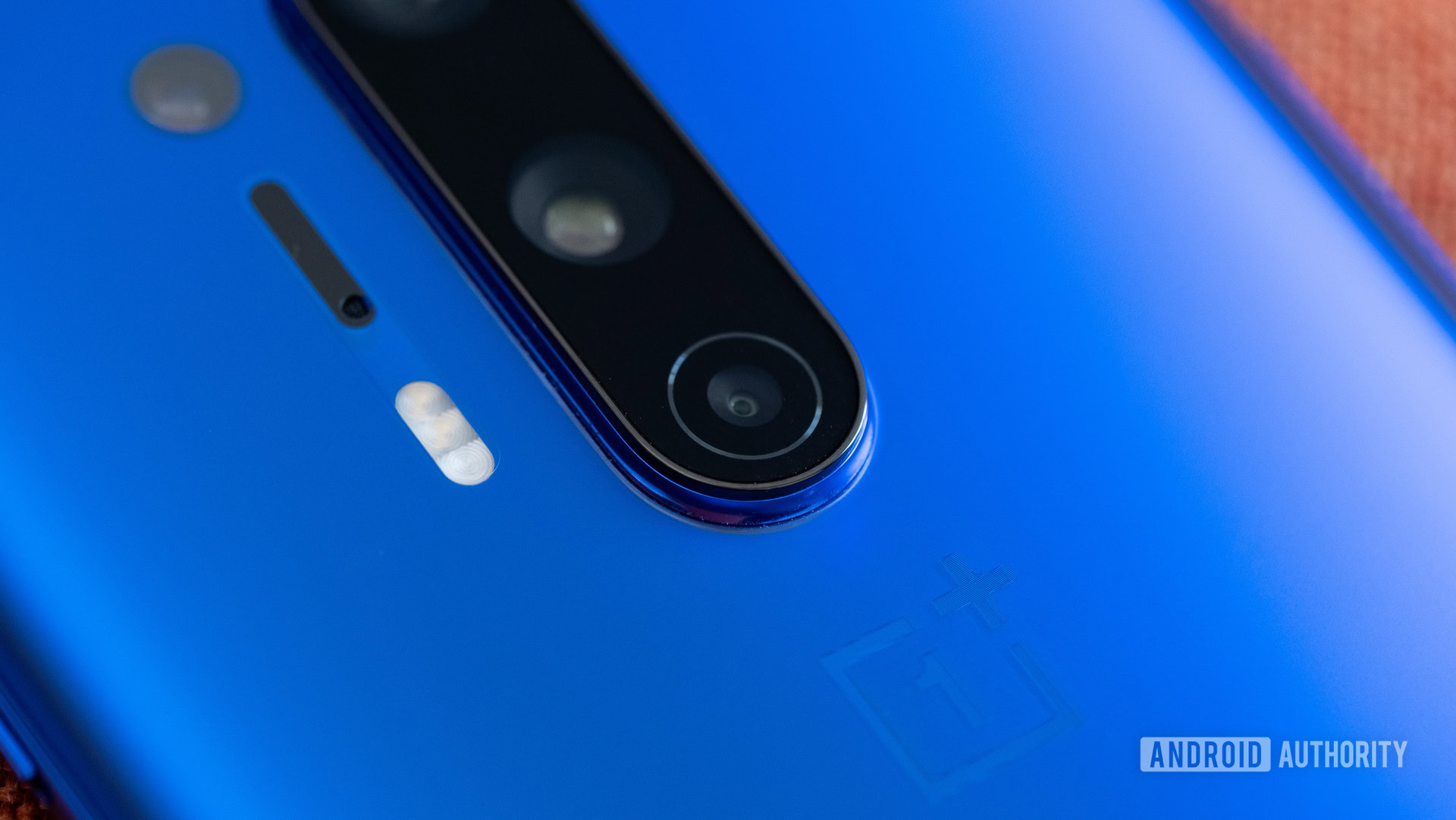
OnePlus added a new camera to the 8 Pro called the Color Filter camera. This is a 5MP shooter that uses a special filter to allow the phone to see different spectrums of light. From my testing, I noticed that it can differentiate between materials. For example, the lens caps of my lenses are plastic while the body is metal, and the 8 Pro’s camera separated them into black and sepia components. Meanwhile, my hand is turned white.
From the other examples above, you can see that the plastic on the speaker turned black while the mesh turned sepia. Meanwhile, the wood on the table and floor turned white.
I’ve reached out to OnePlus for clarity on what exactly is happening here, and received this response:
Right now our three cameras have covered most of the focal lengths used by users on a daily basis, so we hope to explore more possibilities for mobile phone photography.Inspired by the unique color tones used by professional photographers, OnePlus innovatively uses a filter lens on the fourth camera, which processes light differently to generate a surreal image with a unique color tone.The customized filter transforms the light passing through to an unusual and unique spectrum for the sensor to collect. And the data collected is then processed to generate images that appear rather surreal.
While this feature is interesting, to say the least, it perplexes me that OnePlus would add custom hardware for a single filter, which surely increased the overall cost of the device.
My colleague Robert Triggs wrote more about this filter here if you’re interested.
In mid-May 2020, controversy erupted around the OnePlus 8 Pro’s Color camera. It was revealed that the camera can “see” through certain materials, including some plastics and even clothes. In response, OnePlus said it would disable the camera in the Chinese versions of the phone. Meanwhile, international OnePlus 8 Pro units will get an update to reduce the see-through effect.
OnePlus 8 Pro specs
| OnePlus 8 Pro | OnePlus 8 | |
|---|---|---|
Display | OnePlus 8 Pro 6.78-inch AMOLED 3,168 x 1,440 (19.8:9) 120Hz refresh rate In-display fingerprint sensor 3D Corning Gorilla Glass | OnePlus 8 6.55-inch AMOLED 2,400 x 1,080 (20:9) 90Hz refresh rate In-display fingerprint sensor 3D Corning Gorilla Glass |
Processor | OnePlus 8 Pro Qualcomm Snapdragon 865 | OnePlus 8 Qualcomm Snapdragon 865 |
RAM | OnePlus 8 Pro 8GB / 12GB LPDDR5 | OnePlus 8 8GB / 12GB LPDDR4X |
Storage | OnePlus 8 Pro 128GB / 256GB UFS 3.0 | OnePlus 8 128GB / 256GB UFS 3.0 2-LANE |
Cameras | OnePlus 8 Pro Rear: 48MP, f/1.78, 1.12µm, OIS, EIS 8MP 3x telephoto, f/2.44, 1.0µm, OIS 48MP ultrawide, f/2.2, 119.7° 5MP color filter, f/2.4 Front: 16MP, f/2.45, 1.0µm, EIS, fixed focus | OnePlus 8 Rear: 48MP, f/1.78, 0.8µm, OIS, EIS 2MP macro, f/2.4, 1.75µm 16MP ultrawide, f/2.2, 116° Front: 16MP, f/2.0, 1.0µm, EIS, fixed focus |
Battery | OnePlus 8 Pro 4,510mAh Warp Charge 30T (5V/6A) Warp Charge 30 Wireless | OnePlus 8 4,300mAh Warp Charge 30T (5V/6A) |
IP Rating | OnePlus 8 Pro IP68 | OnePlus 8 None |
Software | OnePlus 8 Pro Oxygen OS Android 10 | OnePlus 8 Oxygen OS Android 10 |
Dimensions and weight | OnePlus 8 Pro 165.3 x 74.35 x 8.5mm 199g | OnePlus 8 160.2 x 72.9 x 8.0mm 180g |
OnePlus 8 Pro review: The verdict
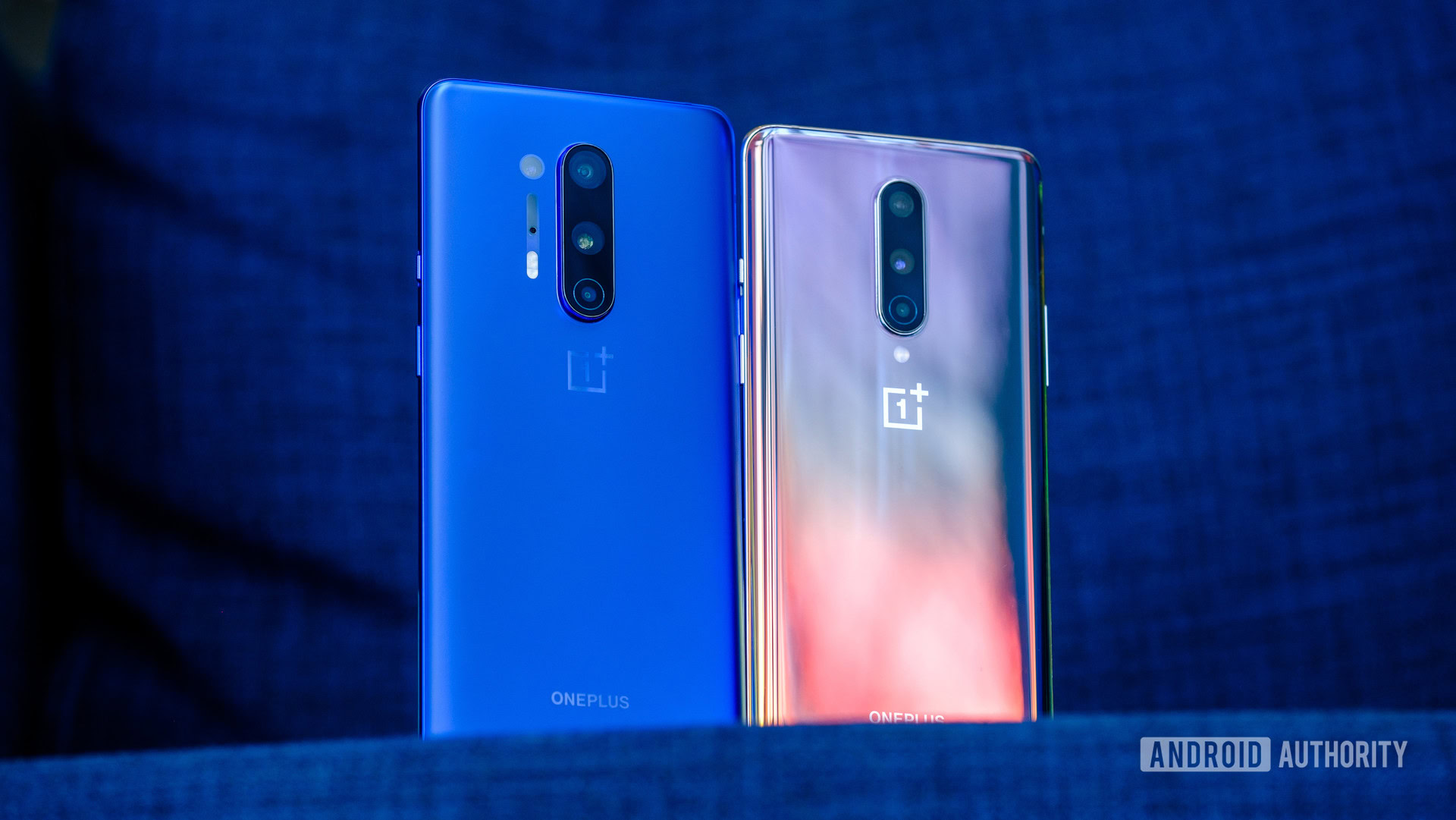
At launch, the OnePlus 8 Pro started at $899, making it the most expensive OnePlus phone at the time. Since then, the company launched the OnePlus 9 series and, as usual, started to downplay the existence of the OnePlus 8 series. As such, the OnePlus 8 Pro can be found in 2021 for much less than $899.
However, it also can be difficult to find at all. Currently, the phone goes in and out of stock at OnePlus’ website. This likely has to do with the company wanting you to instead buy the faster, more powerful, and more expensive OnePlus 9 Pro.
In 2021, if you are considering the OnePlus 8 Pro, we wholeheartedly recommend getting the OnePlus 9 Pro instead. There’s pretty much nothing the 8 Pro offers that the 9 Pro doesn’t also offer, and the 9 Pro bests the 8 Pro in numerous ways — especially when it comes to the camera.
See also: OnePlus 8 Pro one year later: Is it still worth buying?
If the 9 Pro is too expensive, the vanilla OnePlus 9 starts at $729 and offers even faster wired charging, wireless charging, and a similar camera experience (although it lacks a telephoto lens). It also has the newest Snapdragon 888 processor and a flat display, which some people appreciate over curved displays.
If you want to move on from OnePlus, the Samsung Galaxy S21 Plus is of similar size and price and has a great triple-lens camera system. It doesn’t have the same high-resolution display or 30W wireless charging capabilities as the 8 Pro, but a lot of the specs and features are comparable.
Finally, if you want to get the overall best premium phone from 2020, we recommend checking out the Samsung Galaxy Note 20 Ultra. These days, you can find that phone for around the same price as you would have paid for a top-end OnePlus 8 Pro. That phone matches or exceeds most of the specs and features of the 8 Pro, with the notable exception of charging speeds (both wired and wireless). But if you want a big, powerful phone with a great camera system, the Note 20 Ultra won’t disappoint.
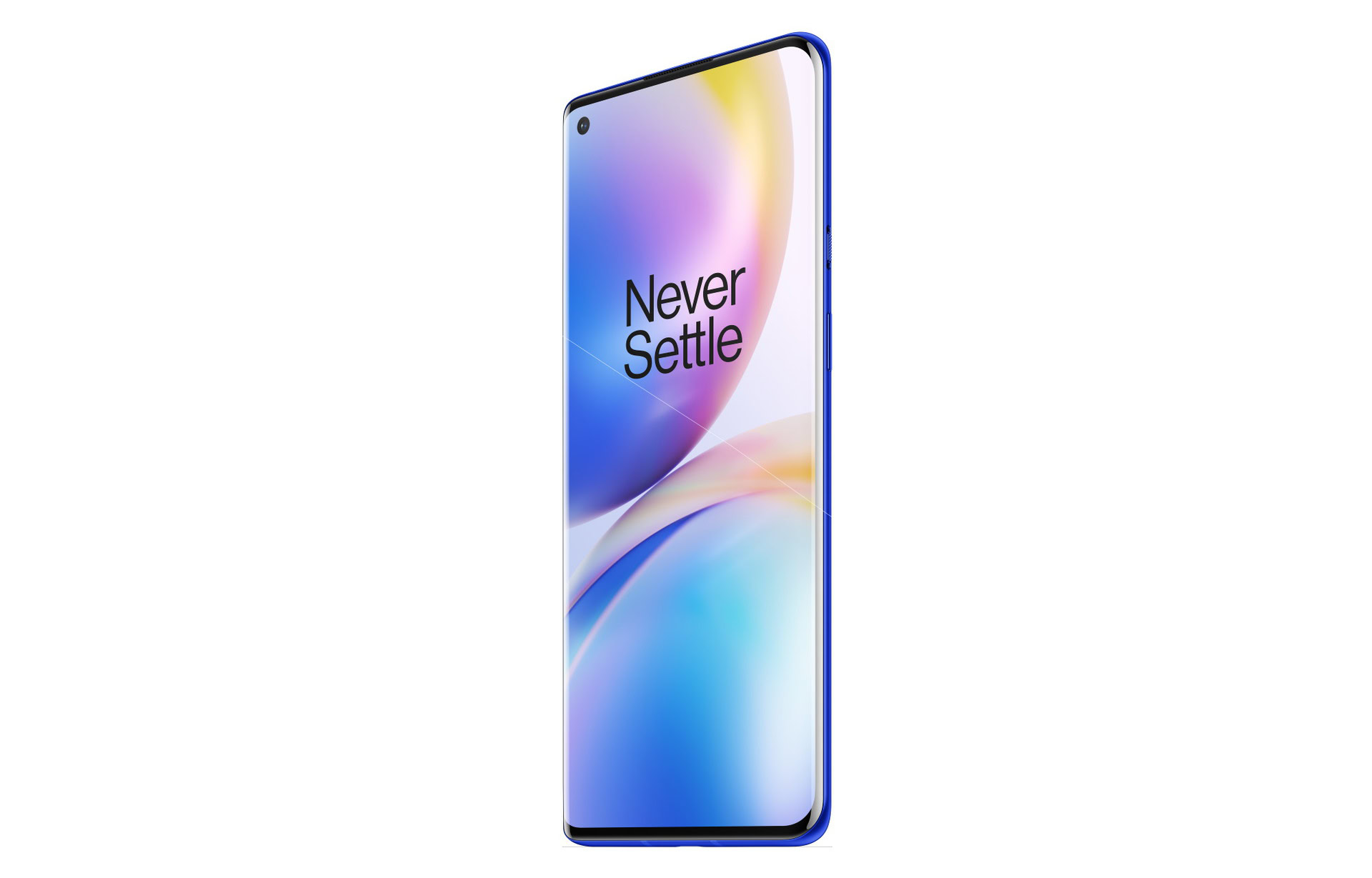
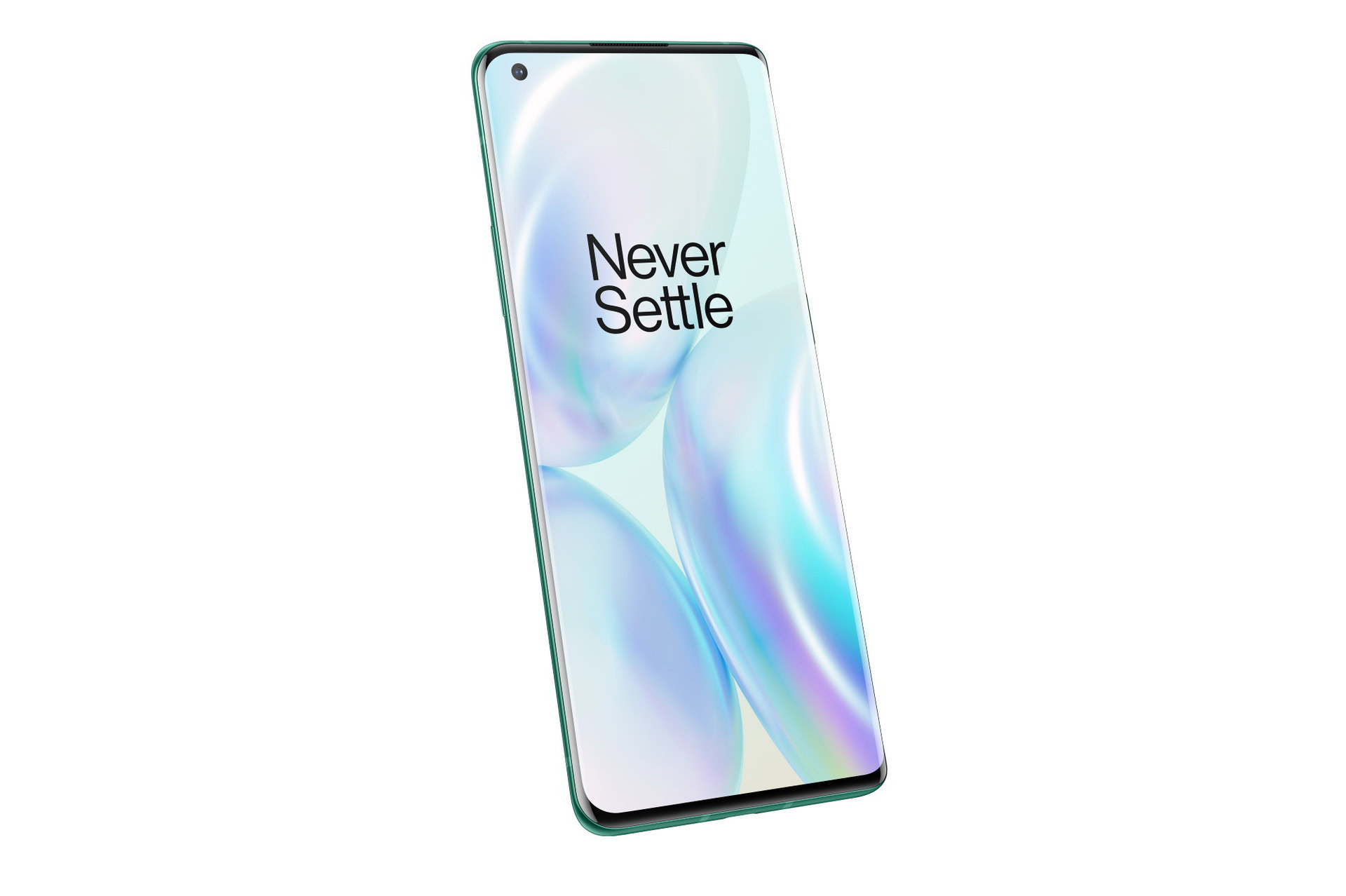
Other frequently asked questions
Q: What color choices does the OnePlus 8 Pro have?
A: The OnePlus 8 Pro comes in your choice of Onyx Black, Glacial Green, and Ultramarine Blue.
Q: Does the OnePlus 8 Pro work on Verizon?
A: As mentioned in the article above, the unlocked Pro does not support Verizon’s network. However, there is a version of the OnePlus 8 designed for the network.
Q: What is the OnePlus 8 Pro battery life like?
A: Really good actually! You’ll get a full day’s use out and then some. In our testing, we were easily able to get about a day-and-a-half on average, so even power users will find the battery is well above average.
Q: Is the OnePlus 8 Pro waterproof?
A: No consumer smartphone is completely waterproof, but the OnePlus 8 Pro has IP68 water and dust resistance, which is the same standard as you’ll find with other “waterproof” phones. You can learn more about IP ratings here.
Q: Where can I buy the OnePlus 8 Pro?
A: The OnePlus 8 Pro is sold in major retailers in the US, Europe, India, and several other regions/countries. To learn more about where and when you can buy the OnePlus 8 Pro, head here.
Q: Does the OnePlus 8 Pro have a pop-up cam?
A: As noted in the review, the OnePlus 8 Pro switches to a more conventional front-facing camera. So no, there won’t be a pop-up variant.
Q: Does the OnePlus 8 Pro support 5G out of the box?
A: Yes, there’s no special variant of the OnePlus 8 Pro — all versions have 5G support. That said, the Pro doesn’t offer mmWave 5G in the United States. That means you can’t use it with Verizon 5G.
Q: Is the OnePlus 8 Pro worth the premium?
A: Yes, it’s a great high-end phone. That said, if the OnePlus 8 more than meets your needs, it’s probably the better choice.